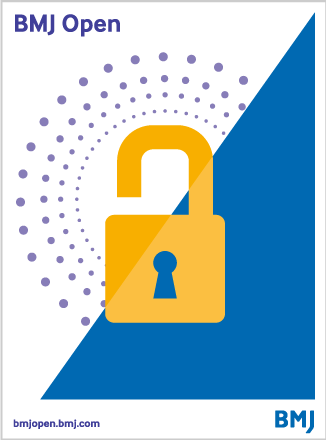Pigment
Recent Insights
Related Topics
Research Articles
Published research studies are articles that present the findings of original research that has undergone a peer-review process and has been made publicly available in scholarly journals, books or other media.
How to submit an article:
- Registered users can submit any published journal article that has a unique DOI (Digital Object Identifier) name or link to Research Hub.
- For example, you can paste the full DOI link:
https://doi.org/10.1109/5.771073or just the DOI name:10.1109/5.771073into the field above and click submit. - The person who is first to submit a valid article to Research Hub will forever be credited for it, and every article submission earns you +6 Research Points.

Qi-Shen-Tang alleviates retinitis pigmentosa by inhibiting ferroptotic features via the NRF2/GPX4 signaling pathway
2023 Nov Heliyon Xiong M, Ou C, Yu C, Qiu J, Lu J, Fu C, et al.
Experimental Study Ferroptosis Qi Shen Tang Retinitis PigmentosaQi Shen Tang, a traditional Chinese medicine, was found to suppress retinal cell death in retinitis pigmentosa by inhibiting a process called ferroptosis.
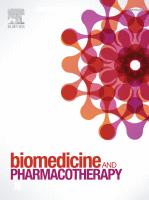
Fructus Lycii and Salvia miltiorrhiza Bunge extract attenuate oxidative stress-induced photoreceptor ferroptosis in retinitis pigmentosa
2023 Nov Biomedicine & Pharmacotherapy Yang Y, Wang Y, Deng Y, Lu J, Xiao L, Li J, et al.
Experimental Study Goji Berry Retinitis PigmentosaFructus Lycii and Salvia miltiorrhiza Bunge extract (FSE) shows potential as a clinical treatment for retinitis pigmentosa by inhibiting photoreceptor cell death following oxidative stress.
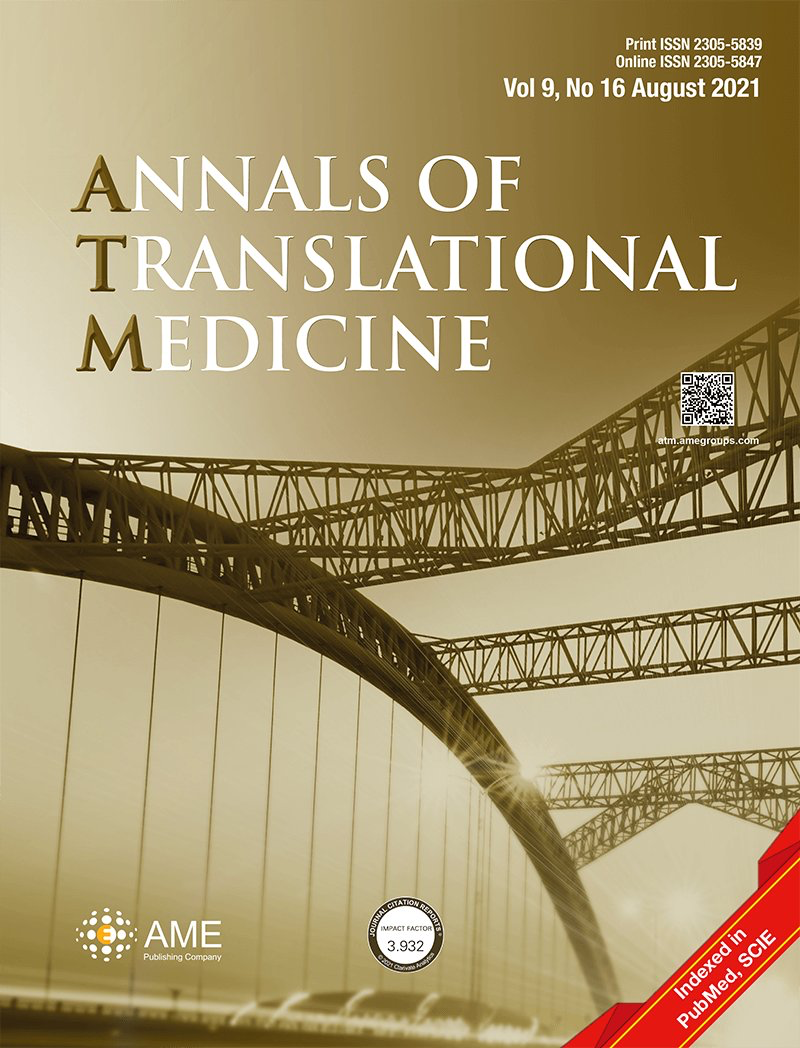
Mechanism and ingredients prediction of Radix Salviae-Angelicae Sinensis Radix-Lycii Fructus-Rehmanniae Radix Praeparata-Ginkgo Folium for retinitis pigmentosa therapy using network pharmacology and molecular docking analysis
2023 Oct Annals of Translational Medicine Wu J, Sun Z, Zhang D, Liu H, Wu J, Zhang S
Network Pharmacology Goji Berry Dang Gui Ginkgo Folium Retinitis Pigmentosa Shu Di HuangThe research unveils luteolin, quercetin, and kaempferol in RALRG as promising complementary components for RP treatment, with a key role in managing oxidative stress and PI3K/AKT signaling pathways.
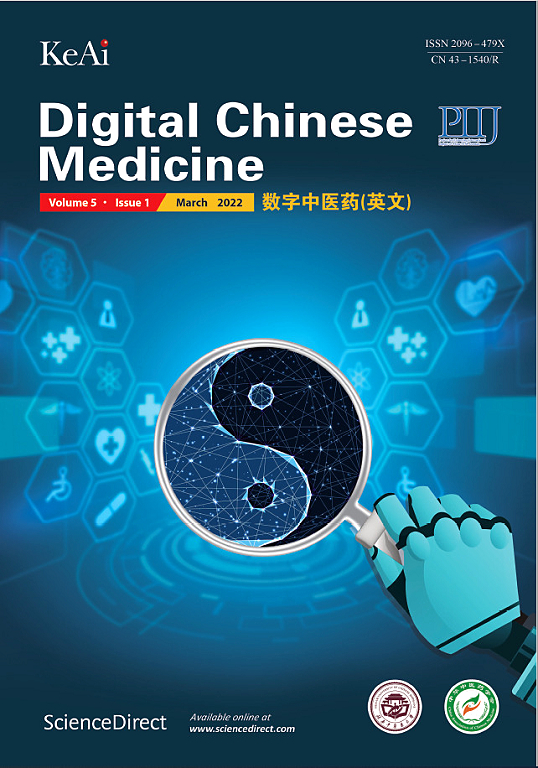
Inhibition of photoreceptor apoptosis in mice with retinitis pigmentosa through NF-κB/NLRP3 pathway suppression with Lycium barbarum polysaccharide
2023 Sep Digital Chinese Medicine Wang Y, Deng Y, Lu J, Peng J, Zhou Y, Yang Y, et al.
Experimental Study Animal Study Retinitis PigmentosaLycium barbarum polysaccharide may decrease apoptosis in retinal photoreceptor cells of retinitis pigmentosa mice by suppressing nuclear factor-kappa B/NOD-like receptor thermal protein domain-associated protein 3 pathway.
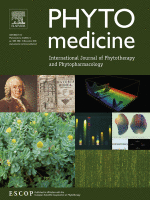
Bujing Yishi tablets alleviate photoreceptor cells death via the P2X7R/CX3CL1/CX3CR1 pathway in Retinitis Pigmentosa rats
2023 Jul Phytomedicine Qi Y, Liu L, Liang D, Tang S, Yu X, Ye H, et al.
Experimental Study Bu Jing Yi Shi Tablets Retinitis PigmentosaThe Chinese herbal medicine Bujing Yishi tablets could alleviate photoreceptor degeneration in retinitis pigmentosa by inhibiting microglial over-activation and inflammation.
Research Insights
Insights are moderated by the Research Hub team and offer an at-a-glance overview of interesting research findings.
 Qi Shen Tang, a traditional Chinese medicine, was found to suppress retinal cell death in retinitis pigmentosa by inhibiting a process called ferroptosis.
Qi Shen Tang, a traditional Chinese medicine, was found to suppress retinal cell death in retinitis pigmentosa by inhibiting a process called ferroptosis.

2023 Heliyon Qi-Shen-Tang alleviates retinitis pigmentosa by inhibiting ferroptotic features via the NRF2/GPX4 signaling pathway Xiong M, Ou C, Yu C, Qiu J, Lu J, Fu C, et al.
Experimental Study Ferroptosis Qi Shen Tang Retinitis Pigmentosa
The researchers investigated the potential mechanism of Qi-Shen-Tang (QST), a combination of two traditional Chinese medicines, on retinitis pigmentosa, an eye disease. They induced a retinitis pigmentosa model in mice while subsequently treating them with QST. They then examined the impact of the medicine on the tissue morphology and function of the retina in these model mice, in addition to monitoring factors such as retinal blood flow and fundus structure.
The study found that the treatment with QST led to notable improvements in the retinal tissue morphology and function. In addition, they observed an increase in retinal blood flow and normalization of the fundus structure. Following the treatment, the amounts of iron and malondialdehyde in the retinal tissue were significantly reduced, while the levels of superoxide dismutase, glutathione, and the protein expressions of various enzymes significantly increased. Molecular docking results also revealed potential interactions between the components of QST and key proteins of a particular signaling pathway, namely the Nuclear factor erythroid 2-related factor 2/ Glutathione peroxidase 4 pathway. The results suggest that QST may inhibit ferroptosis by suppressing this signaling pathway, thereby mitigating retinitis pigmentosa-induced damage to the retinal tissue.
 Fructus Lycii and Salvia miltiorrhiza Bunge extract (FSE) shows potential as a clinical treatment for retinitis pigmentosa by inhibiting photoreceptor cell death following oxidative stress.
Fructus Lycii and Salvia miltiorrhiza Bunge extract (FSE) shows potential as a clinical treatment for retinitis pigmentosa by inhibiting photoreceptor cell death following oxidative stress.

2023 Biomedicine & Pharmacotherapy Fructus Lycii and Salvia miltiorrhiza Bunge extract attenuate oxidative stress-induced photoreceptor ferroptosis in retinitis pigmentosa Yang Y, Wang Y, Deng Y, Lu J, Xiao L, Li J, et al.
Experimental Study Goji Berry Retinitis Pigmentosa
The study utilized hydrogen peroxide to induce oxidative stress in 661 W cells, which were examined with flow cytometry and an enzyme-linked immunosorbent assay. The impact of this oxidative stress on the cells’ mitochondria was observed using an electron microscope to understand the nature of cell death. The study also analyzed the compensatory effect of the Fructus Lycii and Salvia miltiorrhiza Bunge extract on the retinal structure and function of rd10 mice using histopathological examination, fundus photographs, and electroretinography. Protein levels were evaluated using Western blot assays, specifically targeting proteins including Tumor Protein p53, Solute Carrier Family 7 Member 11, Glutathione peroxidase 4, Arachidonate-12-Lipoxygenase, and Dipeptidyl peptidase 4.
The results showed that hydrogen peroxide-induced oxidative stress in 661 W cells increased oxidative stress products and certain protein expressions, while decreasing others. Notably, the activation of Glutathione peroxidase 4 did not lessen reactive oxygen species generation and had little impact on cell death. The research discovered that both Ferrostatin-1 and the extract could lessen reactive oxygen species generation and inhibit cell death of photoreceptors in retinitis pigmentosa, achieving this by inhibiting the expression of one protein and increasing the expression of two others.
 The research unveils luteolin, quercetin, and kaempferol in RALRG as promising complementary components for RP treatment, with a key role in managing oxidative stress and PI3K/AKT signaling pathways.
The research unveils luteolin, quercetin, and kaempferol in RALRG as promising complementary components for RP treatment, with a key role in managing oxidative stress and PI3K/AKT signaling pathways.

2023 Annals of Translational Medicine Mechanism and ingredients prediction of Radix Salviae-Angelicae Sinensis Radix-Lycii Fructus-Rehmanniae Radix Praeparata-Ginkgo Folium for retinitis pigmentosa therapy using network pharmacology and molecular docking analysis Wu J, Sun Z, Zhang D, Liu H, Wu J, Zhang S
Network Pharmacology Dang Gui Ginkgo Folium Goji Berry
The research used various databases such as Traditional Chinese Medicine Systems Pharmacology Database and Analysis Platform, GeneCards, and the Online Mendelian Inheritance in Man database to gather the ingredients of RALRG and potential targets of RP and RALRG. A protein-protein interaction network was constructed to visualize these interactions. The R program was utilized to perform functional enrichment. The researchers constructed a visual RALRG-RP-pathway pharmacology network using Cytoscape 3.9.1 and applied molecular docking to compute binding affinity.
The research revealed a total of 132 effective active elements in RALRG correlating to 248 target genes. Ninety-two intersection target genes were discovered from the overlap of RP- and RALRG-related genes. These intersection targets were discovered to be primarily involved in oxidative stress, responding to metal ions, and handling chemical stress. Several molecular pathways such as PI3K-AKT and MAPK were identified as closely connected to RP therapy. A potential pharmacology network was designed for the RALRG-RP-pathway with AKT1 and JUN being considered the main targets. The active ingredients luteolin, quercetin, and kaempferol were highlighted as crucial for this mechanism. RALRG overall was established as a main regulator for oxidative stress and PI3K/AKT signaling pathways in the treatment of RP.
 Lycium barbarum polysaccharide may decrease apoptosis in retinal photoreceptor cells of retinitis pigmentosa mice by suppressing nuclear factor-kappa B/NOD-like receptor thermal protein domain-associated protein 3 pathway.
Lycium barbarum polysaccharide may decrease apoptosis in retinal photoreceptor cells of retinitis pigmentosa mice by suppressing nuclear factor-kappa B/NOD-like receptor thermal protein domain-associated protein 3 pathway.

2023 Digital Chinese Medicine Inhibition of photoreceptor apoptosis in mice with retinitis pigmentosa through NF-κB/NLRP3 pathway suppression with Lycium barbarum polysaccharide Wang Y, Deng Y, Lu J, Peng J, Zhou Y, Yang Y, et al.
Experimental Study Retinitis Pigmentosa
The team carried out both in vivo and in vitro studies. Initially, mouse retinal ganglion cells were categorized into groups based on the doses of Lycium barbarum polysaccharide they were given and a positive drug control group. These cells were then subject to different H2O2 concentrations to induce apoptosis. Techniques such as flow cytometry, immunofluorescence, and western blot were used to evaluate cell viability, apoptosis rate, and expression of various markers. For in vivo research, the team used C57/BL6 and Rd10 mice divided into similar groups as the in vitro experiment. The mice underwent drug treatment for four weeks, after which their retina's response to light and general health were evaluated using an electroretinogram and histopathological examination.
The in vitro experiments showed that the apoptosis rate of ganglion cells significantly increased in the model group, along with up-regulation of certain proteins. However, a high dose of Lycium barbarum polysaccharide decreased the cell apoptosis rate and the levels of certain proteins. Similarly, in vivo testing showed that a high dose of the substance significantly aided in morphological alterations in a retina layer of Rd10 mice, and down-regulated the expression levels of a number of apoptosis-related proteins.
 The Chinese herbal medicine Bujing Yishi tablets could alleviate photoreceptor degeneration in retinitis pigmentosa by inhibiting microglial over-activation and inflammation.
The Chinese herbal medicine Bujing Yishi tablets could alleviate photoreceptor degeneration in retinitis pigmentosa by inhibiting microglial over-activation and inflammation.

2023 Phytomedicine Bujing Yishi tablets alleviate photoreceptor cells death via the P2X7R/CX3CL1/CX3CR1 pathway in Retinitis Pigmentosa rats Qi Y, Liu L, Liang D, Tang S, Yu X, Ye H, et al.
Experimental Study Bu Jing Yi Shi Tablets Retinitis Pigmentosa
This experiment began with the creation of a rat model for retinitis pigmentosa through intraperitoneal injection of N-Methyl-N-Nitrosourea. After the rats developed retinal degeneration, they were treated with Bujing Yishi tablets. To confirm the impact of these tablets on the rat model, the researchers conducted several tests, including examination of the retinal cytokine levels and expression of IBA-1 in microglia. This let them monitor the apoptotic cells, ONL thickness, retinal morphology, and photoreceptor degeneration. They further used western blot, real-time polymerase chain reaction, and immunofluorescence to determine the mRNA and protein expression levels involved in the P2X7R/CX3CL1/CX3CR1 pathway.
Following the treatment of the rats with Bujing Yishi tablets, there was significant relief in the morphological structure deterioration of the retinas and the photoreceptor degeneration. The herbal tablets also reduced the number of apoptotic cells in the ONL and prevented the thinning of the ONL, pointing to their effectiveness in retinal preservation. Additionally, the tablets lowered the level of over-activated microglia and decreased retinal levels of inflammatory markers. Bujing Yishi tablets were also observed to decrease the protein and mRNA expression of P2X7, CX3CL1, and CX3CR1, further exhibiting their mechanism of retinal preservation through influence on the P2X7R/CX3CL1/CX3CR1 pathway.
Review Articles
Review articles summarise and critically evaluate the current state of research on a specific topic or field by synthesising multiple primary research studies.
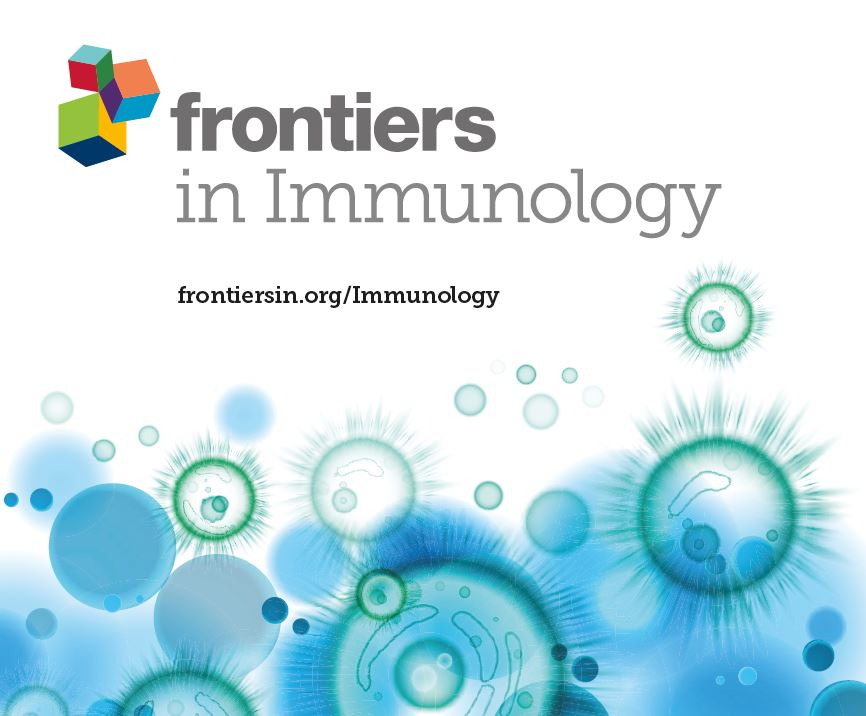
Neuroinflammation in retinitis pigmentosa: Therapies targeting the innate immune system
2022 Oct 27 Frontiers in Immunology Zhao L, Hou C, Yan N
Review Article Experimental Study Retinitis PigmentosaInflammation modulation—targeting innate immune signals and exploring epigenetic regulation, the gut microbiome, and herbal agents—emerges as a promising treatment strategy for retinitis pigmentosa.

Research Progress in TCM Treatment of Retinitis Pigmentosa
2022 May 19 Journal of Clinical and Nursing Research Yang Q, Zhang L, Cheng J, Tong J
Review Article Retinitis PigmentosaTraditional Chinese medication, acupuncture, and their integration can be used effectively for the treatment of Retinitis Pigmentosa (RP) improving vision and visual field.
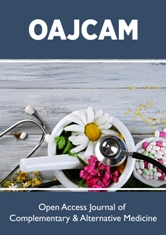
The Use of Acupuncture in Eye Diseases: An Overview
2020 Sep 11 Open Access Journal of Complementary & Alternative Medicine Liang X
Acupuncture has been used for thousands of years in treating eye diseases, with recent studies and case reports indicating some effectiveness in improving conditions such as glaucoma, optic atrophy, retinitis pigmentosa, and amblyopia.
Review Article Acupuncture Eye Diseases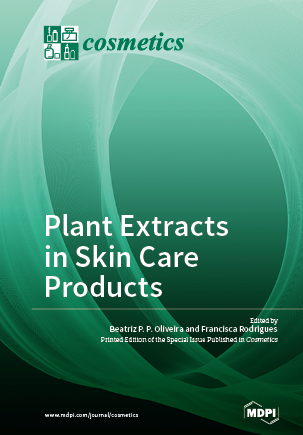
Non-Traditional and Non-Invasive Approaches in Facial Rejuvenation: A Brief Review
2020 Feb 12 Cosmetics M. Smith, A. Ferris, T. K. Nahar, V. Sharma, M.
Review Article Facial ConditionsBoth facial acupuncture and facial exercises have the potential to improve the skin laxity, wrinkle length, muscle thickness, and pigmentary changes associated with aging.
Clinical Trials
Clinical trials are research studies that involve people and are conducted to evaluate the safety and efficacy of new treatments or interventions, such as drugs, medical devices, or behavioural therapies.

Goji Berry Intake Increases Macular Pigment Optical Density in Healthy Adults: A Randomized Pilot Trial
2021 Dec 09 Nutrients Li X, Holt RR, Keen CL, Morse LS, Yiu G, Hackman RM
Randomised Controlled Trial Age-Related Macular DegenerationRegular intake of goji berries can increase Macular Pigment Optical Density, potentially helping to prevent or delay the development of age-related macular degeneration.
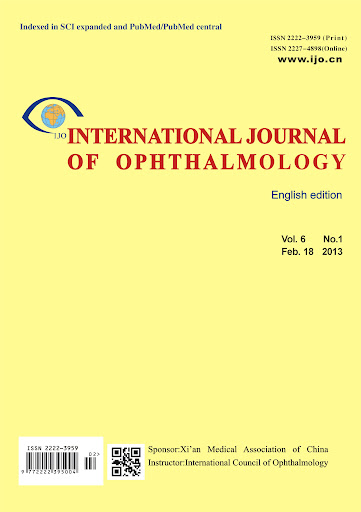
Macular pigment and serum zeaxanthin levels with Goji berry supplement in early age-related macular degeneration
2018 Jun 18 International Journal of Ophthalmology Shang Li, Na Liu, Li Lin, et al.
Randomised Controlled Trial Goji Berry Age-Related Macular Degeneration ZeaxanthinGoji berry supplementation can improve macular pigment and visual acuity in patients with early age-related macular degeneration by increasing serum zeaxanthin levels.
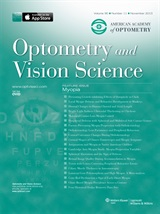
Goji Berry Effects on Macular Characteristics and Plasma Antioxidant Levels
2011 Feb Optometry and Vision Science Bucheli P, Vidal K, Shen L, Gu Z, Zhang C, Miller LE, et al.
Randomised Controlled Trial Goji Berry Eye Health Antioxidant ZeaxanthinDaily goji berry supplementation increases antioxidant levels and protects visual health in the elderly, though the exact mechanism remains unclear.
Study Protocols
Published study protocols are detailed plans that outline the objectives, methodology, statistical analyses, and organisation of a research study that have been made publicly available for others to review and use as a reference.
Presentation Slides

Experimental Study
Qi Shen Tang, a traditional Chinese medicine, was found to suppress retinal cell death in retinitis pigmentosa by inhibiting a process called ferroptosis.
Xiong M, Ou C, Yu C, Qiu J, Lu J, Fu C, Peng Q, Zeng M, Song H

Experimental Study
Fructus Lycii and Salvia miltiorrhiza Bunge extract (FSE) shows potential as a clinical treatment for retinitis pigmentosa by inhibiting photoreceptor cell death following oxidative stress.
Yang Y, Wang Y, Deng Y, Lu J, Xiao L, Li J, Zhou Y, Nie F, Chen X, Peng J, Tan H, Qin Y, Peng Q

Network Pharmacology
The research unveils luteolin, quercetin, and kaempferol in RALRG as promising complementary components for RP treatment, with a key role in managing oxidative stress and PI3K/AKT signaling pathways.
Wu J, Sun Z, Zhang D, Liu H, Wu J, Zhang S

Experimental Study
Lycium barbarum polysaccharide may decrease apoptosis in retinal photoreceptor cells of retinitis pigmentosa mice by suppressing nuclear factor-kappa B/NOD-like receptor thermal protein domain-associated protein 3 pathway.
Wang Y, Deng Y, Lu J, Peng J, Zhou Y, Yang Y, Peng Q

Experimental Study
The Chinese herbal medicine Bujing Yishi tablets could alleviate photoreceptor degeneration in retinitis pigmentosa by inhibiting microglial over-activation and inflammation.
Qi Y, Liu L, Liang D, Tang S, Yu X, Ye H, Chen N

Experimental Study
Zhangyanming Tablets show potential as a protective agent for retinal function in early-stage, genetically-caused blindness in mice, possibly due to their antioxidant and anti-/pro-apoptotic properties.
Huang Z, Huang Q, Xu K, Liang L, Li Y, Zhou W, Ning N, Zhou J, Hu J, Liu S, Dang L

Review Article
Inflammation modulation—targeting innate immune signals and exploring epigenetic regulation, the gut microbiome, and herbal agents—emerges as a promising treatment strategy for retinitis pigmentosa.
Zhao L, Hou C, Yan N

Review Article
Traditional Chinese medication, acupuncture, and their integration can be used effectively for the treatment of Retinitis Pigmentosa (RP) improving vision and visual field.
Yang Q, Zhang L, Cheng J, Tong J
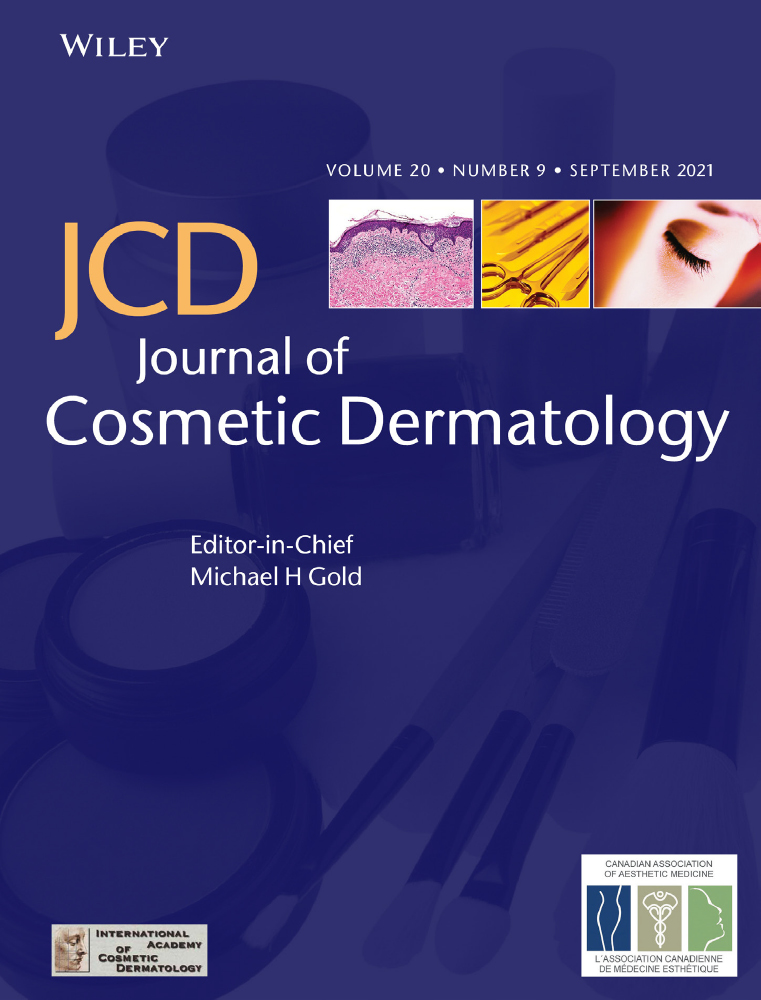
Clinical Study
Daily oral consumption of one avocado enhances the elasticity and firmness of the facial skin in healthy women.
Henning SM, Guzman JB, Thames G, Yang J, Tseng CH, Heber D, Kim J, Li Z

Randomised Controlled Trial
Regular intake of goji berries can increase Macular Pigment Optical Density, potentially helping to prevent or delay the development of age-related macular degeneration.
Li X, Holt RR, Keen CL, Morse LS, Yiu G, Hackman RM

Experimental Study
Zeaxanthin dipalmitate, a wolfberry-derived carotenoid, can delay retinal degeneration in mice modelling Retinitis Pigmentosa mainly through its anti-inflammatory and oxidative stress effects.
Liu F, Liu X, Zhou Y, Yu Y, Wang K, Zhou Z, Gao H, So KF, Vardi N, Xu Y
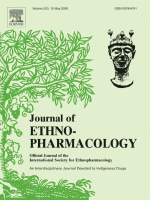
Experimental Study
Fructus Lycii and Salvia miltiorrhiza Bunge extract improve retinal morphology and function by regulating the Nrf2/HO-1 pathway to curb oxidative reactions.
Ou C, Jiang P, Tian Y, Yao Z, Yang Y, Peng J, Zeng M, Song H, Peng Q
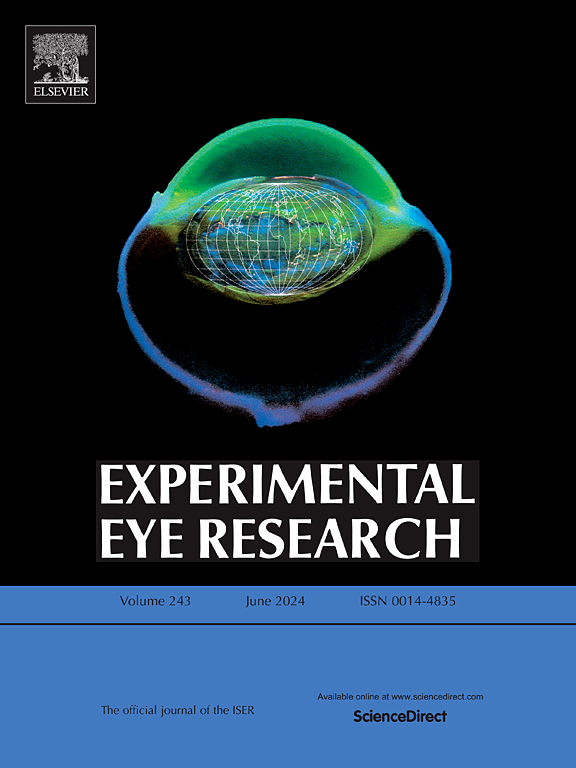
Experimental Study
Gypenosides, the main functional component from the vine Gynostemma pentaphyllum, display potential as a treatment for Retinitis Pigmentosa by protecting photoreceptor cells from degeneration.
Alhasani RH, Zhou X, Biswas L, Li X, Reilly J, Zeng Z, Shu X

Review Article
Both facial acupuncture and facial exercises have the potential to improve the skin laxity, wrinkle length, muscle thickness, and pigmentary changes associated with aging.
M. Smith, A. Ferris, T. K. Nahar, V. Sharma, M.
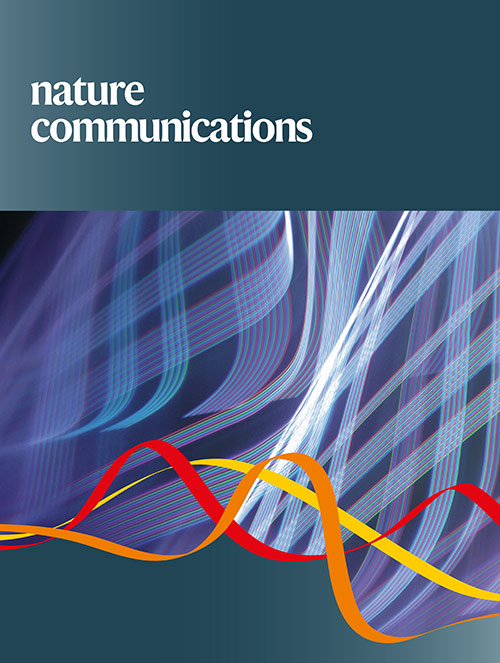
Experimental Study
Pu-erh tea was found to lower triglyceride and total cholesterol levels more significantly than green, oolong, or black teas.
Huang, F., Zheng, X., Ma, X. et al.

Randomised Controlled Trial
Goji berry supplementation can improve macular pigment and visual acuity in patients with early age-related macular degeneration by increasing serum zeaxanthin levels.
Shang Li, Na Liu, Li Lin, et al.

Randomised Controlled Trial
Daily goji berry supplementation increases antioxidant levels and protects visual health in the elderly, though the exact mechanism remains unclear.
Bucheli P, Vidal K, Shen L, Gu Z, Zhang C, Miller LE, Wang J
Executive Summary
Write an executive summary in the form of a blog article on the topic of "Research into Chinese medicine treatment for Pigment" summarising the research below and using language that can be easily understood by patients and avoiding medical jargon using a professional and caring tone of voice.
Write an executive summary in the form of a blog article on the topic of "Researched Chinese medicine treatments for Pigment" summarising the research below in an objective and easy to understand way, and using language that can be easily understood by patients. Group the article into Chinese medicine treatments first, followed by nutrition and other treatments. Avoid using medical jargon and use a professional and caring tone of voice.
Write me a concise but easy to understand executive summary on the topic of "Chinese medicine treatments for Pigment" based on the following research that I will give you. Your summary should be 2 paragraphs long in Australian English spelling and include references to the studies.
A Experimental Study published in 2023 in the journal Heliyon found that Qi Shen Tang, a traditional Chinese medicine, was found to suppress retinal cell death in retinitis pigmentosa by inhibiting a process called ferroptosis. The researchers investigated the potential mechanism of Qi-Shen-Tang (QST), a combination of two traditional Chinese medicines, on retinitis pigmentosa, an eye disease. They induced a retinitis pigmentosa model in mice while subsequently treating them with QST. They then examined the impact of the medicine on the tissue morphology and function of the retina in these model mice, in addition to monitoring factors such as retinal blood flow and fundus structure. The study found that the treatment with QST led to notable improvements in the retinal tissue morphology and function. In addition, they observed an increase in retinal blood flow and normalization of the fundus structure. Following the treatment, the amounts of iron and malondialdehyde in the retinal tissue were significantly reduced, while the levels of superoxide dismutase, glutathione, and the protein expressions of various enzymes significantly increased. Molecular docking results also revealed potential interactions between the components of QST and key proteins of a particular signaling pathway, namely the Nuclear factor erythroid 2-related factor 2/ Glutathione peroxidase 4 pathway. The results suggest that QST may inhibit ferroptosis by suppressing this signaling pathway, thereby mitigating retinitis pigmentosa-induced damage to the retinal tissue.
A Experimental Study published in 2023 in the journal Biomedicine & Pharmacotherapy found that Fructus Lycii and Salvia miltiorrhiza Bunge extract (FSE) shows potential as a clinical treatment for retinitis pigmentosa by inhibiting photoreceptor cell death following oxidative stress. The study utilized hydrogen peroxide to induce oxidative stress in 661 W cells, which were examined with flow cytometry and an enzyme-linked immunosorbent assay. The impact of this oxidative stress on the cells’ mitochondria was observed using an electron microscope to understand the nature of cell death. The study also analyzed the compensatory effect of the Fructus Lycii and Salvia miltiorrhiza Bunge extract on the retinal structure and function of rd10 mice using histopathological examination, fundus photographs, and electroretinography. Protein levels were evaluated using Western blot assays, specifically targeting proteins including Tumor Protein p53, Solute Carrier Family 7 Member 11, Glutathione peroxidase 4, Arachidonate-12-Lipoxygenase, and Dipeptidyl peptidase 4. The results showed that hydrogen peroxide-induced oxidative stress in 661 W cells increased oxidative stress products and certain protein expressions, while decreasing others. Notably, the activation of Glutathione peroxidase 4 did not lessen reactive oxygen species generation and had little impact on cell death. The research discovered that both Ferrostatin-1 and the extract could lessen reactive oxygen species generation and inhibit cell death of photoreceptors in retinitis pigmentosa, achieving this by inhibiting the expression of one protein and increasing the expression of two others.
A Network Pharmacology published in 2023 in the journal Annals of Translational Medicine found that The research unveils luteolin, quercetin, and kaempferol in RALRG as promising complementary components for RP treatment, with a key role in managing oxidative stress and PI3K/AKT signaling pathways. The research used various databases such as Traditional Chinese Medicine Systems Pharmacology Database and Analysis Platform, GeneCards, and the Online Mendelian Inheritance in Man database to gather the ingredients of RALRG and potential targets of RP and RALRG. A protein-protein interaction network was constructed to visualize these interactions. The R program was utilized to perform functional enrichment. The researchers constructed a visual RALRG-RP-pathway pharmacology network using Cytoscape 3.9.1 and applied molecular docking to compute binding affinity. The research revealed a total of 132 effective active elements in RALRG correlating to 248 target genes. Ninety-two intersection target genes were discovered from the overlap of RP- and RALRG-related genes. These intersection targets were discovered to be primarily involved in oxidative stress, responding to metal ions, and handling chemical stress. Several molecular pathways such as PI3K-AKT and MAPK were identified as closely connected to RP therapy. A potential pharmacology network was designed for the RALRG-RP-pathway with AKT1 and JUN being considered the main targets. The active ingredients luteolin, quercetin, and kaempferol were highlighted as crucial for this mechanism. RALRG overall was established as a main regulator for oxidative stress and PI3K/AKT signaling pathways in the treatment of RP.
A Experimental Study published in 2023 in the journal Digital Chinese Medicine found that Lycium barbarum polysaccharide may decrease apoptosis in retinal photoreceptor cells of retinitis pigmentosa mice by suppressing nuclear factor-kappa B/NOD-like receptor thermal protein domain-associated protein 3 pathway. The team carried out both in vivo and in vitro studies. Initially, mouse retinal ganglion cells were categorized into groups based on the doses of Lycium barbarum polysaccharide they were given and a positive drug control group. These cells were then subject to different H2O2 concentrations to induce apoptosis. Techniques such as flow cytometry, immunofluorescence, and western blot were used to evaluate cell viability, apoptosis rate, and expression of various markers. For in vivo research, the team used C57/BL6 and Rd10 mice divided into similar groups as the in vitro experiment. The mice underwent drug treatment for four weeks, after which their retina's response to light and general health were evaluated using an electroretinogram and histopathological examination. The in vitro experiments showed that the apoptosis rate of ganglion cells significantly increased in the model group, along with up-regulation of certain proteins. However, a high dose of Lycium barbarum polysaccharide decreased the cell apoptosis rate and the levels of certain proteins. Similarly, in vivo testing showed that a high dose of the substance significantly aided in morphological alterations in a retina layer of Rd10 mice, and down-regulated the expression levels of a number of apoptosis-related proteins.
A Experimental Study published in 2023 in the journal Phytomedicine found that The Chinese herbal medicine Bujing Yishi tablets could alleviate photoreceptor degeneration in retinitis pigmentosa by inhibiting microglial over-activation and inflammation. This experiment began with the creation of a rat model for retinitis pigmentosa through intraperitoneal injection of N-Methyl-N-Nitrosourea. After the rats developed retinal degeneration, they were treated with Bujing Yishi tablets. To confirm the impact of these tablets on the rat model, the researchers conducted several tests, including examination of the retinal cytokine levels and expression of IBA-1 in microglia. This let them monitor the apoptotic cells, ONL thickness, retinal morphology, and photoreceptor degeneration. They further used western blot, real-time polymerase chain reaction, and immunofluorescence to determine the mRNA and protein expression levels involved in the P2X7R/CX3CL1/CX3CR1 pathway. Following the treatment of the rats with Bujing Yishi tablets, there was significant relief in the morphological structure deterioration of the retinas and the photoreceptor degeneration. The herbal tablets also reduced the number of apoptotic cells in the ONL and prevented the thinning of the ONL, pointing to their effectiveness in retinal preservation. Additionally, the tablets lowered the level of over-activated microglia and decreased retinal levels of inflammatory markers. Bujing Yishi tablets were also observed to decrease the protein and mRNA expression of P2X7, CX3CL1, and CX3CR1, further exhibiting their mechanism of retinal preservation through influence on the P2X7R/CX3CL1/CX3CR1 pathway.
A Experimental Study published in 2023 in the journal Biomedicine & Pharmacotherapy found that Zhangyanming Tablets show potential as a protective agent for retinal function in early-stage, genetically-caused blindness in mice, possibly due to their antioxidant and anti-/pro-apoptotic properties. Eighty mice with Retinitis Pigmentosa (RP) were divided into two groups, with one group receiving Zhangyanming Tablets (ZYMT) and a control group getting distilled water. After a period of 7 and 14 days, the researchers conducted tests through electroretinogram, fundus photography, and histological examination to assess the retinal function and structure of the subjects. They furthered the study using TUNEL, immunofluorescence and qPCR to evaluate cell apoptosis and the expressions of particular genes. The ZYMT-treated mice displayed a notable enhancement in retinal reactions and overall preservation of retinal structure when compared to the control group. Particularly noticeable were increases in retinal thickness and cell count, alongside a significantly lowered rate of cell death. A comprehensive follow-up shows the altered expressions of several genes in the retina following the application of ZYMT. These results, combined, suggest a key role of ZYMT in mitigating the effects of RP especially in early stages.
A Review Article published in 2022 in the journal Frontiers in Immunology found that Inflammation modulation—targeting innate immune signals and exploring epigenetic regulation, the gut microbiome, and herbal agents—emerges as a promising treatment strategy for retinitis pigmentosa. The study's methodology began by identifying and emphasizing the role of neuroinflammation in the progression of retinitis pigmentosa (RP). It delved into the effects of continuous sterile inflammation, caused by abnormal activation of immunity, which leads to neuron loss and structural destruction in RP. The main focus of the research was to review therapeutic strategies, concentrating on the modulation of innate immune signals like Tumor Necrosis Factor alpha (TNFα) signaling, Toll-Like Receptor (TLR) signaling, NLRP3 inflammasome activation, chemokine signaling, and Janus Kinase/Signal Transducer and Activator of Transcription (JAK/STAT) signaling. Post this initial evaluation, the study proceeded to explore novel therapeutic strategies. It examined how the pattern of gene activation and deactivation (epigenetic regulation), the gut microbiome (the collection of microbes living in our intestines), and various herbal agents can serve as possible treatment paths for retinitis pigmentosa.
A Review Article published in 2022 in the journal Journal of Clinical and Nursing Research found that Traditional Chinese medication, acupuncture, and their integration can be used effectively for the treatment of Retinitis Pigmentosa (RP) improving vision and visual field. Methodologies used in the study include treating RP patients with various Traditional Chinese Medicine preparations such as Ziyin Mingmu pill, Zhujing pill, Mingmu Dihuang decoction, Ginkgo Mingmu prescription, and Yiqi Mingmu pill. These preparations aimed to treat the syndrome of deficiency and excess by improving vision and visual field and enhancing blood supply to the eyes. Acupuncture techniques including the “two dragons playing with pearls” method and fire needling on the Fengchi point were also explored. Finally, various combinations of acupuncture and medication were tested for their efficacy in improving RP symptoms. In terms of results, the studies found noticeable clinical effects and therapeutic outcomes. Most of the investigated treatments showed improvement in visual acuity and visual field, contributing to a high total effective rate. The effectiveness of the remedies was compared with western medication, with the integrated Traditional Chinese Medicine approaches demonstrating superior results. Each Traditional Chinese Medicine treatment method, acupuncture technique, or their combination demonstrated a significant enhancement in visual functions and patient symptoms.
A Clinical Study published in 2022 in the journal Journal of Cosmetic Dermatology found that Daily oral consumption of one avocado enhances the elasticity and firmness of the facial skin in healthy women. Thirty-nine healthy overweight women ranging from 27 to 73 years of age, with skin types classified as Fitzpatrick II-IV, were involved in an 8-week study. They were grouped into two: one group ate an avocado daily while the other maintained their usual diet. The assumption was to examine if the daily intake of avocado could alleviate skin aging. Clinical assessments, specifically concerning facial skin characteristics such as firmness, pigmentation, and hydration, were done using a testing tool, called a cutometer, at specific points on the face (forehead and under the eye). The minimal erythema dose was also determined using a standard systematic approach at the inner arm. In analyzing the results, it was observed that skin firmness and elasticity, specifically on the forehead, improved significantly for those who consumed an avocado daily over the 8-week trial period when compared to their state at the beginning. No noticeable changes were recorded in skin hydration, pigmentation, or resistance to UVB radiation amongst the women in the avocado group relative to the control group. That being said, over time, variations in skin conditions such as melanin, sebum, and erythema were observed in both groups.
A Randomised Controlled Trial published in 2021 in the journal Nutrients found that Regular intake of goji berries can increase Macular Pigment Optical Density, potentially helping to prevent or delay the development of age-related macular degeneration. The research was a randomized, parallel-arm study involving 27 participants aged between 45 and 65. These participants were divided into two groups; one group consumed 28 grams of goji berries five times weekly for 90 days, while the other consumed a supplement containing 6mg of lutein and 4mg of zeaxanthin in the same frequency and duration. This method intended to evaluate the effects of zeaxanthin-rich goji berry intake on Macular Pigment Optical Density and skin carotenoids, both key in AMD risk assessment, while also drawing a comparison to the effects of lutein and zeaxanthin supplements. As the study progressed to its end, the group consuming goji berries showed a significant increase in Macular Pigment Optical Density and skin carotenoids, key biomarkers in assessing the risk of developing age-related macular degeneration. The lutein and zeaxanthin supplement group, however, did not present any noteworthy changes. This suggests the potential superiority of goji berries in the prevention or delay of AMD development compared to the given supplement.
A Experimental Study published in 2021 in the journal Journal of Neurochemistry found that Zeaxanthin dipalmitate, a wolfberry-derived carotenoid, can delay retinal degeneration in mice modelling Retinitis Pigmentosa mainly through its anti-inflammatory and oxidative stress effects. In the study's methodology, Zeaxanthin dipalmitate (ZD) was intravitreally injected into mice on postnatal day 16. Subsequent assessment of retinal function and structure were made at P25 using visual behavior tests, multi-electrode-array recordings, and immunostaining. The involved gene expressions and their regulation by ZD were delved into through transcriptome sequencing and western blotting. In the discussion of results, it was discovered that ZD treatment significantly improved the visual behavior of the mice and delayed degeneration of the retinal photoreceptors, enhancing the light responses of photoreceptors, bipolar cells, and retinal ganglion cells. The ZD treatment led to a decline of up-regulated genes connected to inflammation, apoptosis, and oxidative stress. The study found that ZD reduces the activation of signal transducer and activator of transcription 3 and chemokine ligand 2, down-regulates the expression of the inflammatory factor GFAP, and withholds extracellular signal regulated protein kinases and P38, but not JNK pathways. All these findings indicate the potential of ZD as treatment for Retinitis Pigmentosa.
A Experimental Study published in 2021 in the journal Journal of Ethnopharmacology found that Fructus Lycii and Salvia miltiorrhiza Bunge extract improve retinal morphology and function by regulating the Nrf2/HO-1 pathway to curb oxidative reactions. In terms of methodology, Fructus Lycii and Salvia miltiorrhiza Bunge (FS) extracts were identified through Ultra Performance Liquid Chromatography analysis and administered intragastrically over four weeks to Rd10 mice, known to model retinitis pigmentosa. Following the animals' sacrifice, histopathological examination and Scotopic electroretinography analysis were performed. Oxidative stress markers were determined and the expression levels of Nrf2 and HO-1 mRNA were evaluated via quantitative real-time PCR. Western blot and immunohistochemistry were employed to identify the expression and distribution of Nrf2 and HO-1 protein. In the discussion of the results, substantial morphological improvements were observed regarding the thickness and number of the Outer Nuclear Layer, along with significant functional enhancements in a-amplitude and b-wave amplitude measurements, following FS extract treatment. In addition, the treatment led to a considerable escalation in superoxide dismutase and glutathione peroxidase levels and a reduction in malondialdehyde levels. Furthermore, FS extract was found to stimulate the up-regulation of Nrf2 and HO-1 mRNA and protein expression, possibly underlying the observed retinal enhancements.
A Experimental Study published in 2020 in the journal Experimental Eye Research found that Gypenosides, the main functional component from the vine Gynostemma pentaphyllum, display potential as a treatment for Retinitis Pigmentosa by protecting photoreceptor cells from degeneration. In this study, researchers used zebrafish carrying a specific mutation that leads to early retinal degeneration like in Retinitis Pigmentosa, a group of genetic retinal disorders. The mutation, present in the retinitis pigmentosa GTPase regulator interacting protein 1 gene, was exposed to Gypenosides. The substance was sourced from Gynostemma pentaphyllum, a climbing vine, and previously found to combat oxidative stress and inflammation in optic neuritis cells. The results suggest significant benefits from the application of Gypenosides to retinitis pigmentosa. Treatment of the mutated zebrafish resulted in a notable decrease in the death rate of photoreceptor cells. The reaction of antioxidant genes typically associated with oxidative stress was also significantly reduced. Furthermore, there were marked reductions in reactive oxygen species and malondialdehyde production, along with diminished expression of pro-inflammatory cytokines. Overall, the outcome indicates that Gypenosides effectively counteracted the harmful effects of the mutation, protecting the photoreceptors from degeneration.
A Review Article published in 2020 in the journal Cosmetics found that Both facial acupuncture and facial exercises have the potential to improve the skin laxity, wrinkle length, muscle thickness, and pigmentary changes associated with aging. While injectables, lasers, and surgical interventions have traditionally been used to reverse the changes associated with facial aging, other alternative therapies such as facial acupuncture and facial exercises are now being studied for facial rejuvenation. In this paper, we both summarize the concepts of facial acupuncture and facial exercises, and review seven studies that evaluate the efficacy of these modalities. Data from these studies suggest that both facial acupuncture and facial exercises have the potential to improve the skin laxity, wrinkle length, muscle thickness, and pigmentary changes associated with aging. Patients frequently reported improvement and experienced very few side effects. However, further research is necessary before these modalities are widely accepted as effective by the medical community, though the results of these studies may ultimately make providers less hesitant when patients seek out these services.
A Experimental Study published in 2019 in the journal Nature Communications found that Pu-erh tea was found to lower triglyceride and total cholesterol levels more significantly than green, oolong, or black teas. Comparative studies using rodents treated with Pu-erh tea, green tea, and black tea provided supporting evidence that fully fermented Pu-erh tea is more effective in causing hypolipidemic and hypocholesterolemic effects compared to other partially fermented and non-fermented teas.
A Randomised Controlled Trial published in 2018 in the journal International Journal of Ophthalmology found that Goji berry supplementation can improve macular pigment and visual acuity in patients with early age-related macular degeneration by increasing serum zeaxanthin levels. In this prospective, randomized controlled study, 114 patients, aged 51 to 92 and with early age-related macular degeneration, were divided into two groups. One group was given a daily supplementation of 25 grams of Goji berries for 90 days while the control group continued with their normal diet. The study used Heterochromatic Flicker Photometry to measure the Macular Pigment Optical Density (MPOD) and High-Performance Liquid Chromatography to analyze the levels of serum lutein and zeaxanthin. These were recorded at the beginning and at the end of the study. In the Goji berry group, by the end of the study, there was no significant change in serum lutein levels. However, there was an increase in serum zeaxanthin levels which coincided with the group's improvement in MPOD. In comparison to the control group, the Goji group had higher zeaxanthin levels and MPOD. The visual acuity of the Goji berry group also showed a relative decrease compared to the baseline. These results suggest Goji berry supplementation can beneficially impact early age-related macular degeneration patients by boosting serum zeaxanthin levels, thus raising MPOD and improving visual acuity.
A Randomised Controlled Trial published in 2011 in the journal Optometry and Vision Science found that Daily goji berry supplementation increases antioxidant levels and protects visual health in the elderly, though the exact mechanism remains unclear. In a double-masked, randomized, placebo-controlled study, elderly participants were given either a milk-based goji berry supplement (13.7 g/d) or a placebo for a 90-day period. Eye health was assessed via direct examination to measure pigmentation and soft drusen count in the macula, and blood tests were done to determine plasma zeaxanthin level and total antioxidant capacity. In the discussion of results, the placebo group showed signs of hypopigmentation and soft drusen accumulation in the macula, which did not occur in the group that received the goji berry supplement. The group supplementing with goji berries also showed a significant increase in plasma zeaxanthin levels and total antioxidant capacity, while no change was seen in the placebo group. There were no adverse effects of the supplement reported in either group.
Moderation Tools
Topic
Sign In
Users not signed in are limited to viewing the 5 most recent items of content.
